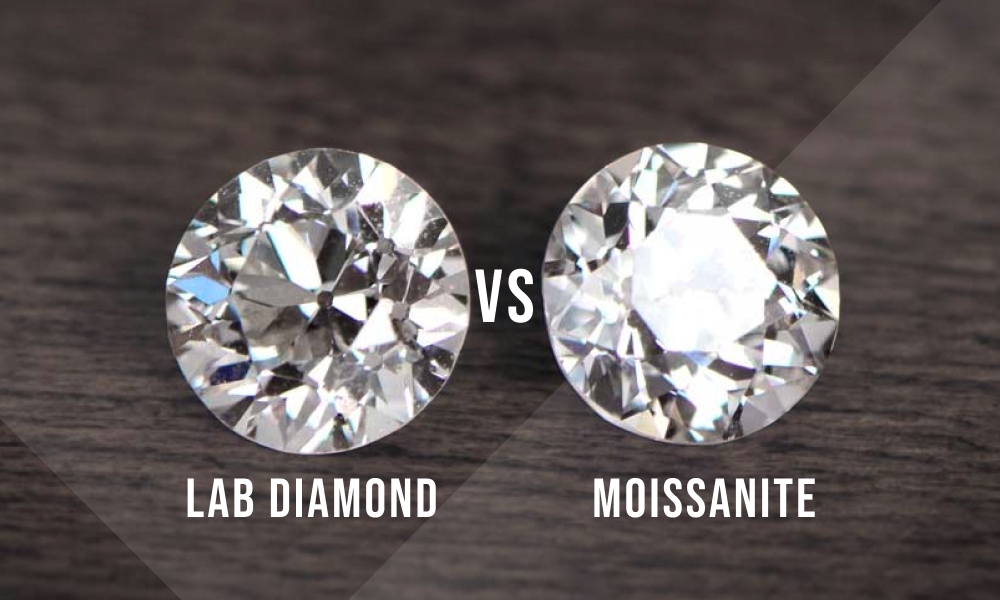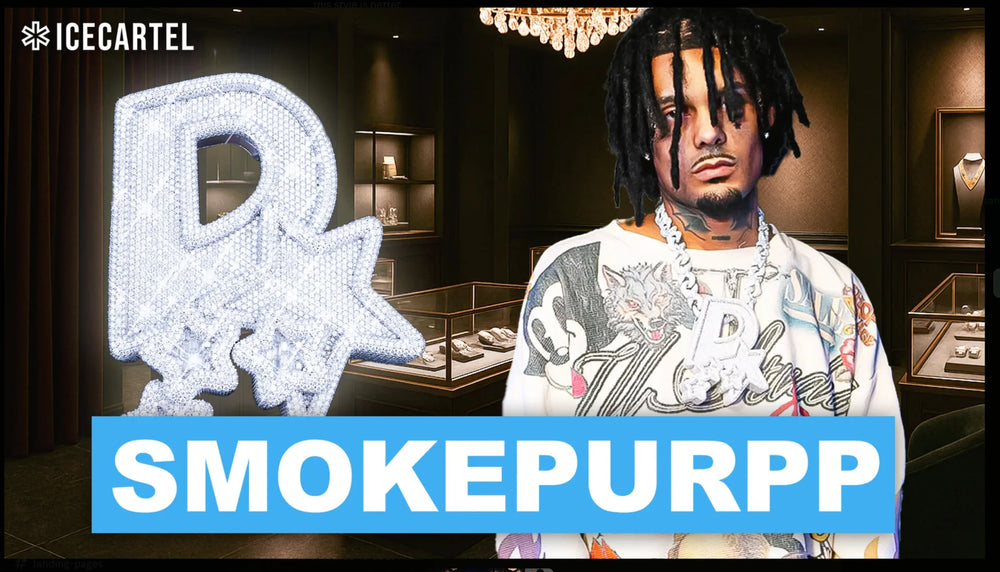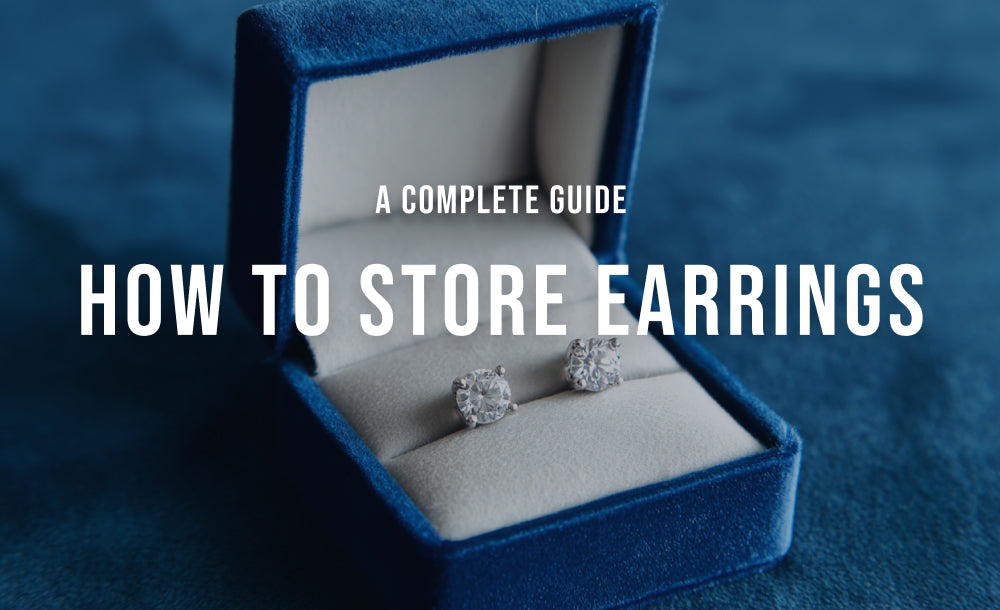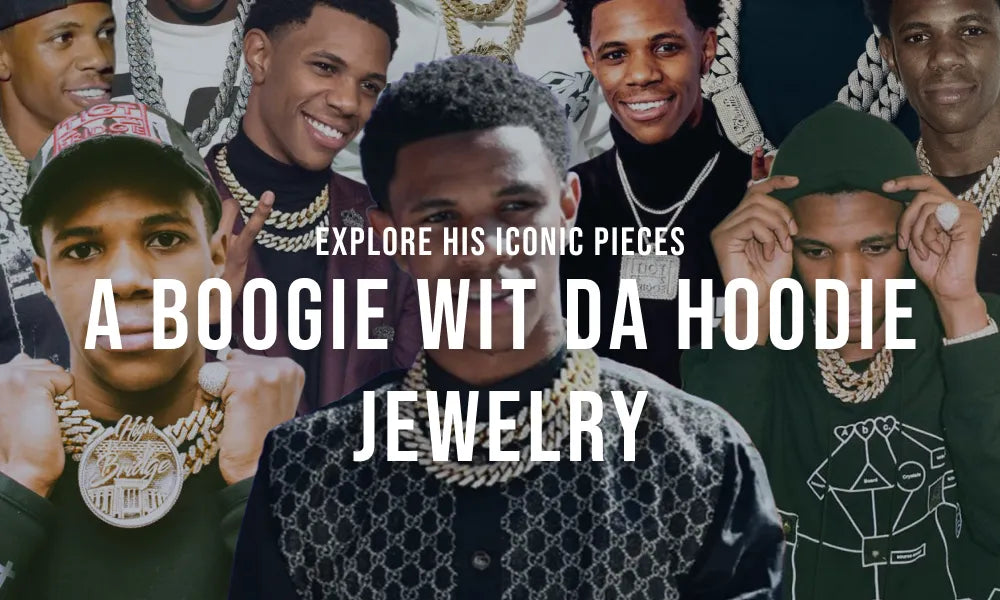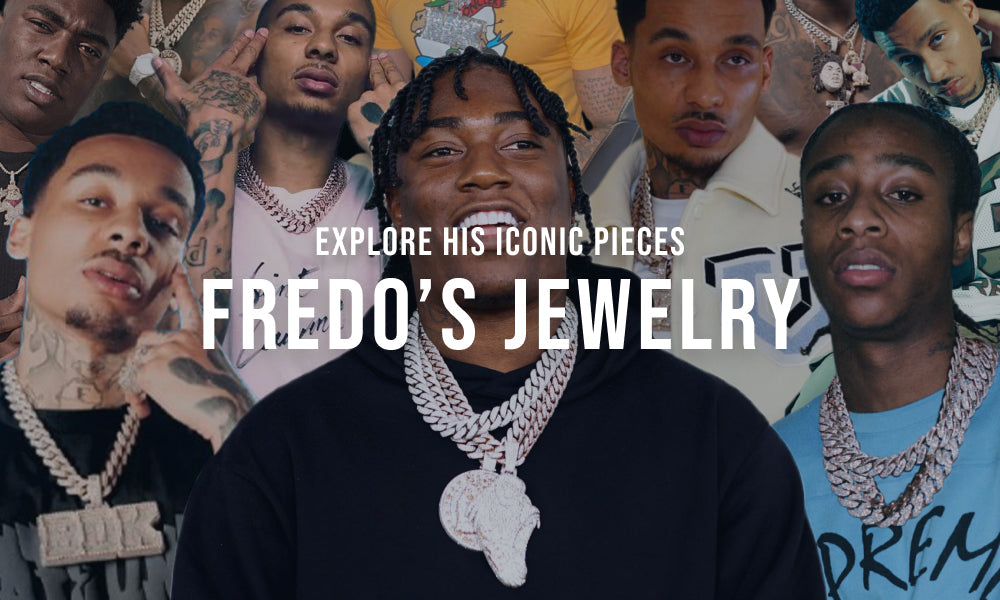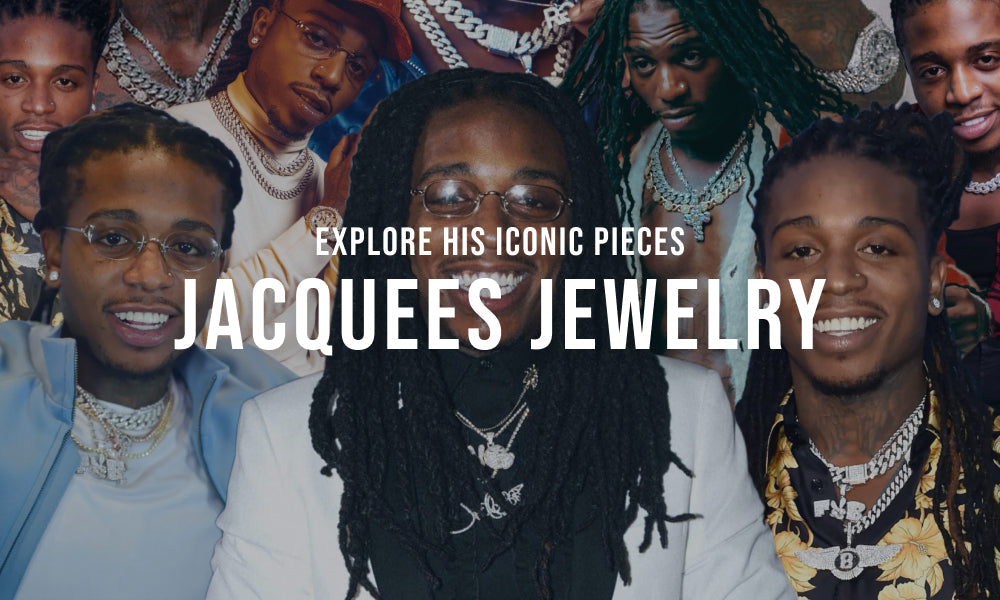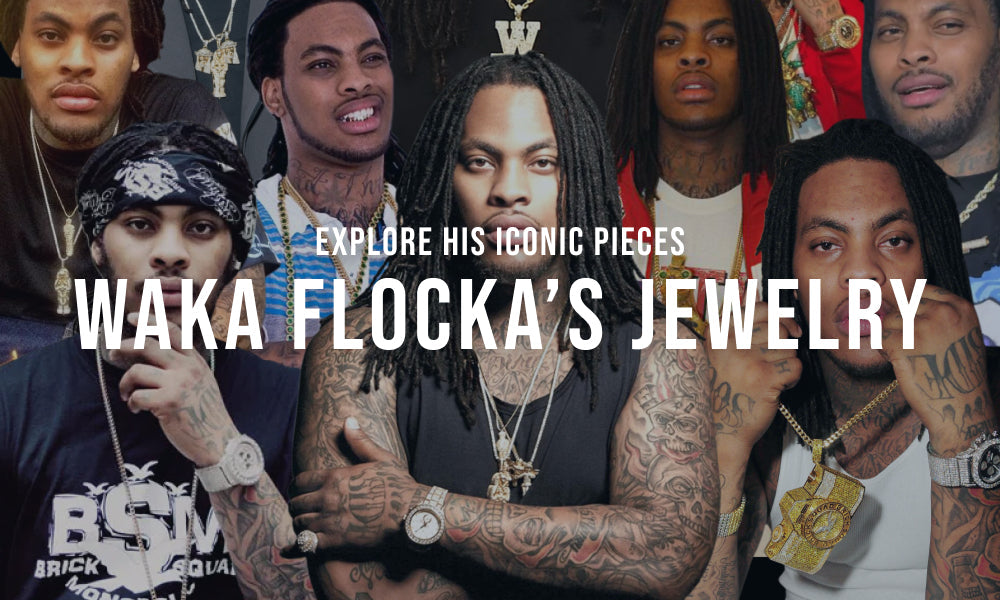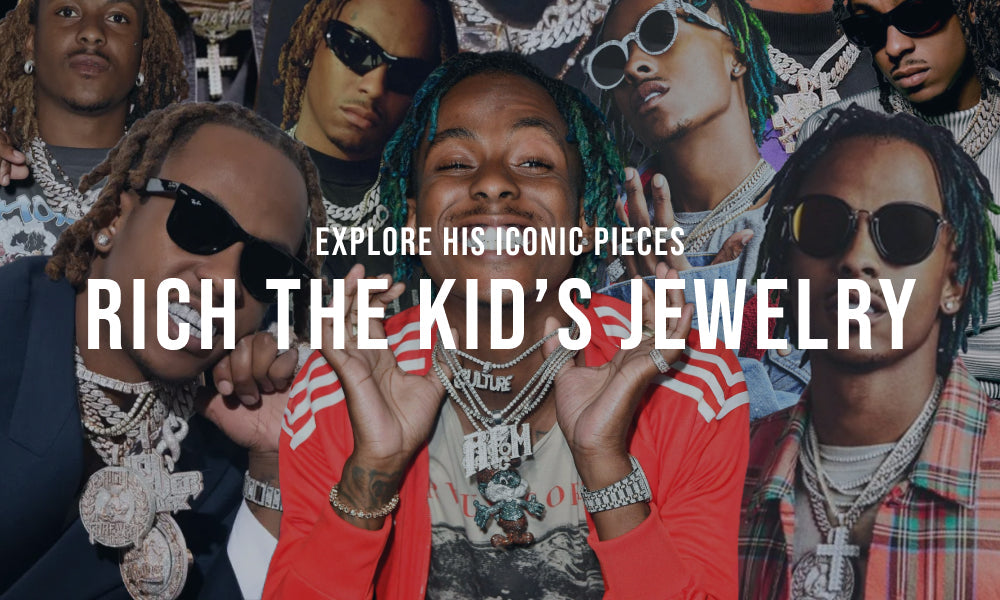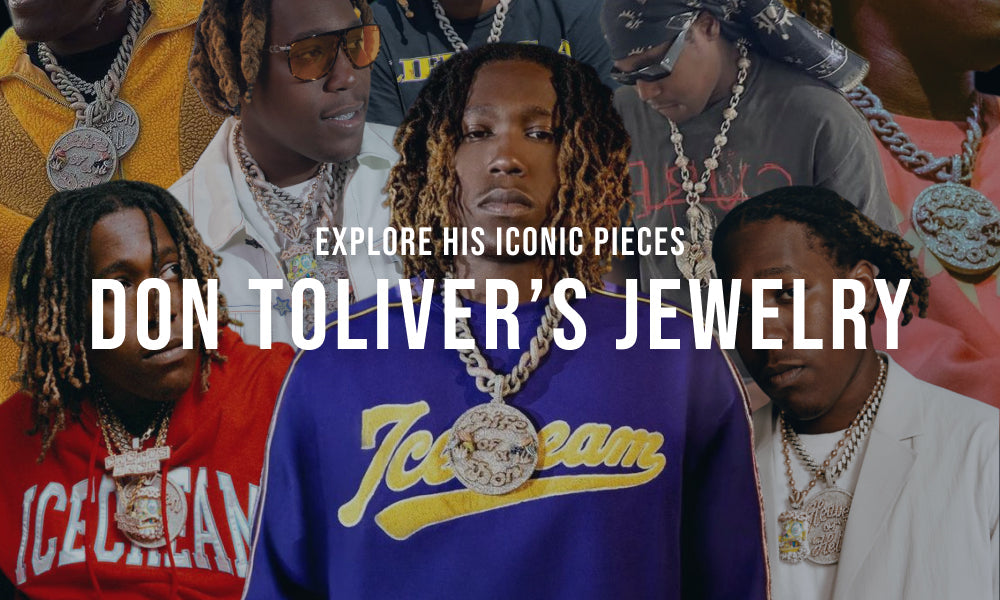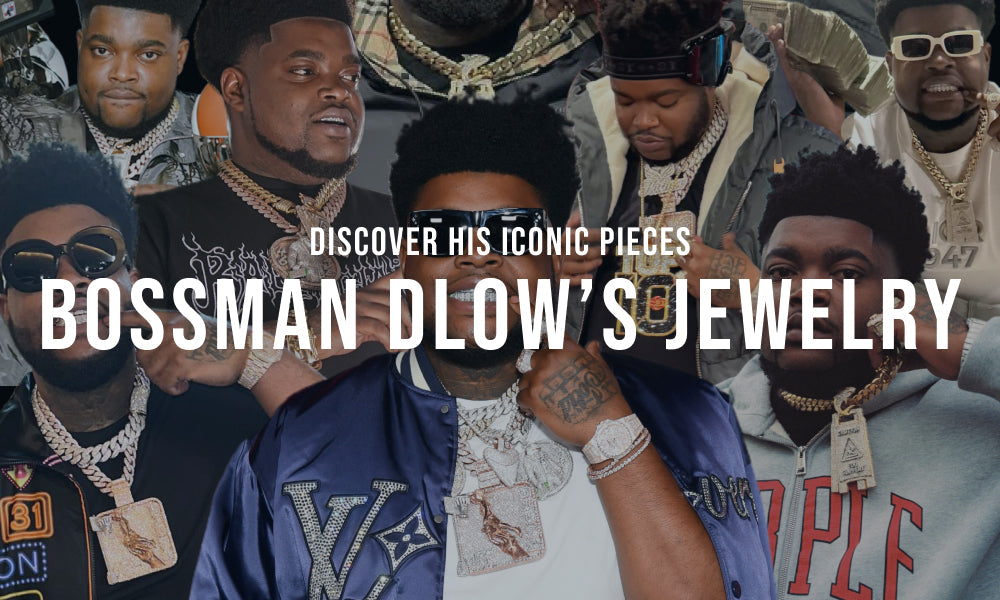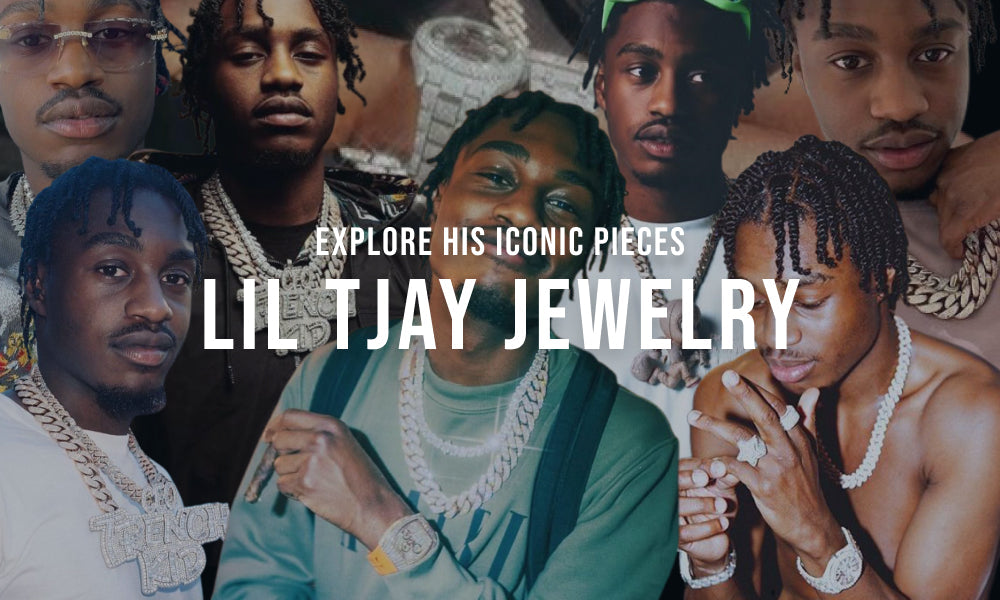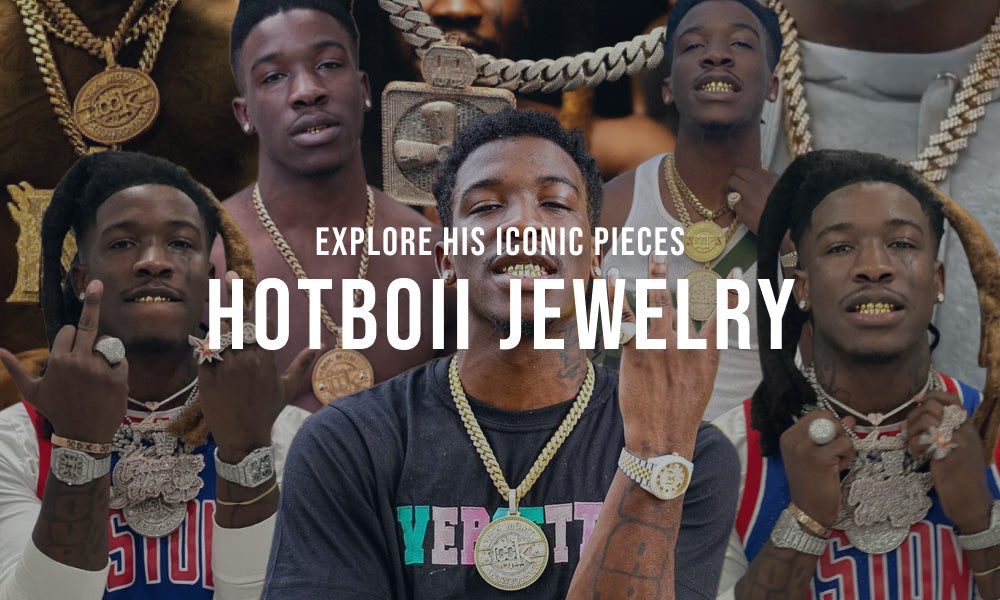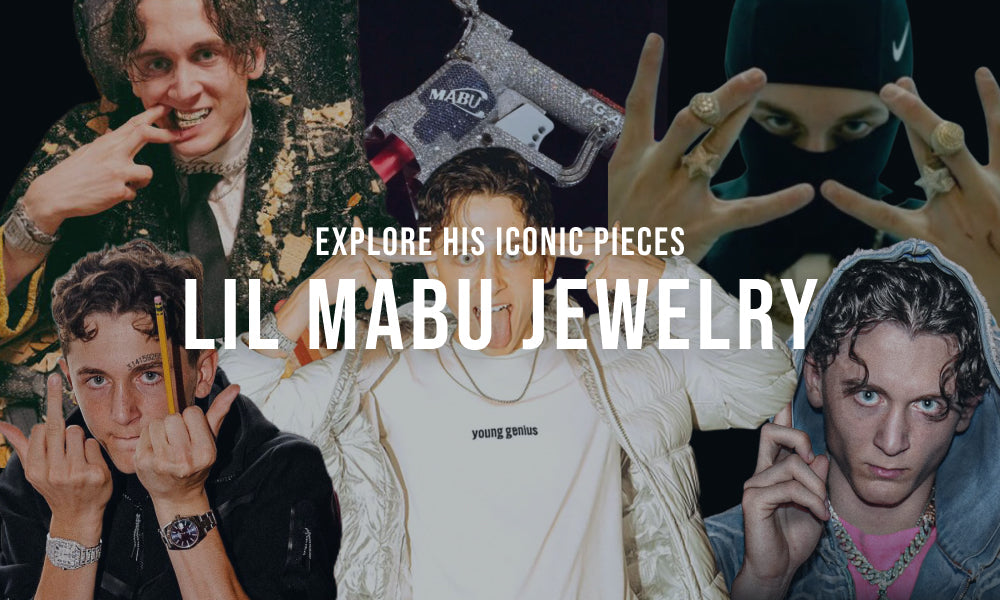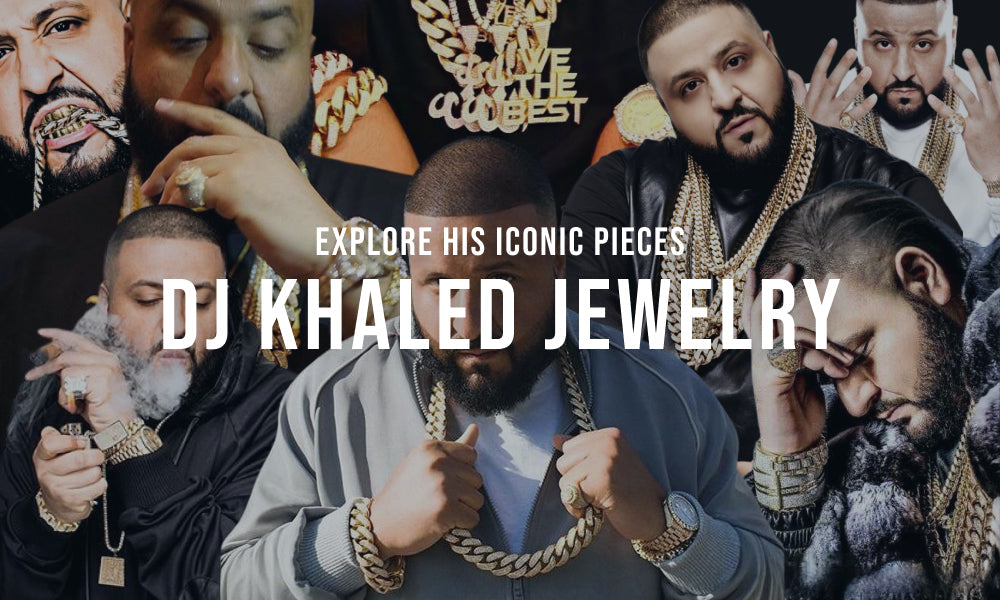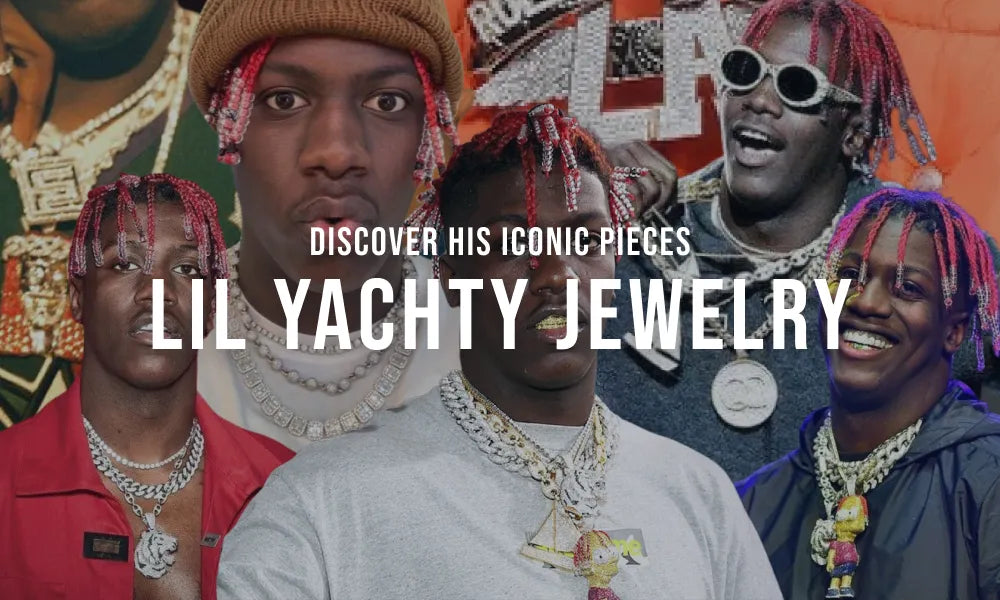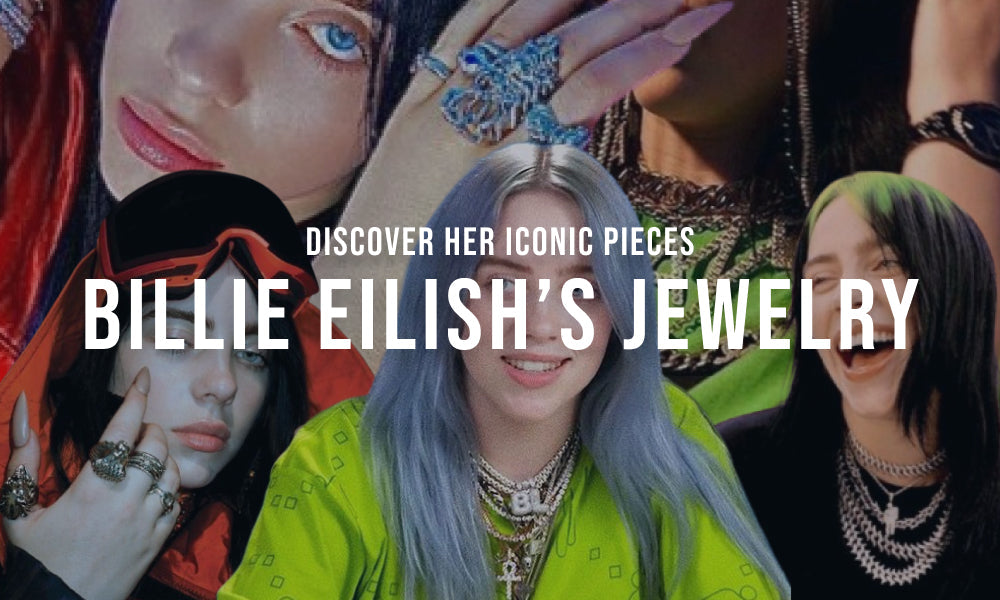There are a lot of natural diamond alternatives available on the market, both natural and synthetic. These diamond simulants contain unique properties, making each stone beautiful and special. But what is the best diamond alternative out there and what is moissanite diamond? Moissanite has grown in popularity over the years, becoming one of the best choices for your budget and personal style.
This blog post will cover all the basics about moissanite, introducing this brilliantly stunning stone and highlighting its chemical and physical properties. Why choose moissanite? This article will help you make the best decision for your next moissanite jewelry purchase as it informs you what is a moissanite diamond exactly and why you should choose it over other stones.
What is Moissanite Made of?
What is moissanite stone? Both natural and lab-grown moissanite is composed of silicon carbide (SiC), with a carbon atom surrounded by four silicon atoms in a tetrahedral form.
Because natural moissanite is so rare and expensive, scientists have found a way to replicate its stunning beauty in a laboratory. Charles & Colvard, a gemstone manufacturer and jewelry company that is the original creator of lab-grown moissanite, began production in the 1990s.
For more information, check out our other blog, The Science Behind Moissanite: How It's Made and Why It's Unique.
How is Moissanite Made?

Dr. Henri Moissan discovered natural moissanite in 1893 located in a meteorite in Arizona. Hence the name moissanite. Moissanite is a unique gemstone, unlike other natural stones and earth-mined diamonds.
Natural Moissanite Formation
Natural moissanite’s formation involves heating silicon carbide to very high temperatures and pressures, resulting in a high refractive index (light reflectivity). Natural moissanite is incredibly rare and is found only in small quantities in certain types of rocks, including kimberlites, lamproites, and meteorites. Natural moissanite does not form in the earth’s mantle, like other stones. Want to learn more about what makes moissanite so special? Check out our blog, 7 moissanite facts you need to know.
Synthetic Moissanite Formation
Synthetic formation is made using the lely process, a process replicating nature. The lely process produces large silicon carbide crystals, combining high-purity silicon with carbon and heating the mixture in an inert atmosphere in a laboratory under close supervision.
Silicon carbide powder is heated until it becomes gas under controlled conditions creating the right balance of elements and allowing the moissanite to grow over several months. It may take up to 2 months for a quality crystal to form.
Moissanite Quality
Moissanite is graded using the 4Cs, a scale developed by the Gemological Institute of America (GIA). This scale is referred to as a “universal language,” a transparent way of conveying the quality of diamond between the buyer and seller. This scale is used for moissanite for marketing purposes, also an easy way to understand the quality of moissanite.
What are the 4Cs?
The 4Cs of diamonds refer to the four characteristics that are used to evaluate and determine the quality of a diamond. The 4Cs include cut, color, clarity, and carat weight. These factors are important to consider when purchasing a diamond, engagement ring, or other fine jewelry.
The 4Cs impact the overall appearance and value of the stone. The cut of a diamond refers to its proportions and how well it reflects light, while color refers to the presence or absence of color in the stone. Clarity refers to the presence of any internal growth characteristics (called inclusions) or external flaws (blemishes), and carat weight is a measure of the diamond's physical weight.
By understanding the 4Cs of diamonds and how it relates to moissanite, the buyer can make informed decisions before purchasing. This ensures the buyer will receive the best quality stone for your money.

Below is a chart breaking down the 4Cs:
Cut
Cut is considered the most important of the 4Cs. Cut should not be confused with shape. Cut depicts the symmetry of the overall stone or the dimensions relating to the shape.
Cut features grades ranging from Excellent to Poor. Excellent grades allow the light to travel through the stone, exhibiting incredible sparkle and bringing out the beauty of the stone. A poorly cut stone will make it look flat, lifeless, and dull (GIA). Here is a range of cut grades commonly found in grading reports:
- Excellent
- Very Good
- Good
- Fair
- Poor
The best cut reflects the stone's final beauty and value. GIA calculates the proportions of the facets influencing the stone's face-up appearance with one of the most common cuts, the round brilliant. According to GIA, the desirable visual effects for a well-cut stone include:
Brightness: Internal and external white light reflected from the stone.
Fire: The scattering of white light into rainbow colors
Scintillation: The amount of sparkle it displays, and the pattern of light and dark areas caused by reflections within the stone.
If the stone is poorly cut, this diminishes the sparkle of the stone, in addition to bringing attention to its other flaws. A well-cut stone may also hide inclusions in the facets, becoming only visible under 10X magnification. A highly trained stone cutter will retain as much weight of the stone as possible and choose the best shape.
Color

Color is graded from D-Z, a scale developed by GIA differentiating it from other scales used in the past. The following is a breakdown of the scale:
D: Colorless. D is the highest color grade. D-color diamonds are very rare and the most expensive out of all the colorlessness grades.
E: Colorless. Only very minute traces of color are not noticeable to the untrained eye.
F: Colorless. Very slight color, still considered colorless, and is the last colorless grade.
G: Near-colorless. Very slightly noticeable.
H: Near-colorless. Color is faintly noticeable compared to higher color grades.
I: Near-colorless
J: Near-colorless
K-L-M: Faint color
N-R: Very light color
S-Z: Light color/noticeable color.
Clarity
The following is a breakdown of the diamond clarity scale, also used with marketing moissanite. The clarity scale is a way to detail the imperfections and how they relate to the stone's overall appearance. Highly included stones impact the fire, brilliance, and scintillation, making the stone appear duller as it loses its sparkle.
Moissanite often contains thin, needle-like imperfections known as needles. These are difficult to spot without magnification and by the untrained eye. Needles may impact the stone's beauty if there are numerous needles clustered together. Mineral crystals can also be present, appearing as either light or dark crystals within the stone.
F: Flawless
Free of inclusions and blemishes. Flawless diamonds are very rare and expensive. Lab-grown moissanite is often free of inclusions or imperfections.
IF: Internal Flawless
Free of inclusions. Minute minor surface blemishes are difficult to see even under 10x magnification by a professional. Diamonds that are IF are also rare and expensive. However, because moissanite is man-made, it is often inherently free of inclusions.
VVS1-VVS2: Very Very Slightly Included
Microscopic inclusions difficult to detect under 10x magnification. VVS diamonds command a higher price than lower-quality diamonds. VVS lab-grown moissanite is more abundant because it is man-made.
VS1-VS2: Very Slightly Included
Minor inclusions seen under 10x magnification.
SI1-SI2: Slightly Included
Inclusions are noticeable under 10x magnification
I1-I2: Included
Visible inclusions under 10x magnification and to the naked eye. These inclusions may detract from the overall beauty of the diamond because they are so noticeable, even sometimes visible by the untrained eye. Highly included moissanite is rarer than diamonds due to its lab origins.
I3: Very Included
Heavily included with inclusions clearly visible without the aid of magnification.
Carat
The carat weight is one of the 4Cs. Carat is the unit of measurement for the physical weight of diamonds. One carat equals 0.200 grams or 1/5 gram and is subdivided into 100 points.
Carat Equation:
Stone Carat equation. This equation varies from shape to shape. A round brilliant can be measured with:
Average diameter squared x depth x specific gravity x adjustment factor (0.00200)
Carats are measured in points (decimals): 0.75cts is also 3/4 ctw or ct.
Moissanite weight is frequently depicted in millimeters or can be used with the above formula or a variation of formulas.
Don’t have time to do math or worry about specific gravity when you are shopping for an engagement ring? Plastic “cheat sheets'' can be used to measure the top of the stone. A jeweler will help guide you if you request measuring the stone for reference.
Can you tell the difference between a larger carat weight from a smaller one right away?
Carat weight does correlate to the size or appearance of the stone. Two stones with the same carat weight may be deceptive--it depends on their cut and proportions.
The cut of the stone affects how light interacts with the stone, bringing out its brilliance or making it appear lifeless. A well-cut stone may appear more brilliant and visually larger than a poorly cut one, even when they are the same carat weight and shape.
Carat weight has a significant impact on a stone's value. Larger carat weight stones are more valuable and will command a higher price.
Moissanite Preforms & Common Settings
Moissanite preforms are moissanite specimens before they are faceted and polished. Preforms are available in various sizes, allowing the lapidary to cut into the appropriate millimeter. After moissanite is cut and faceted, it can be set into different designs. Here are a few common settings for any shape and size moissanite is set into after it has been faceted and polished:
Prong setting

This is the most common setting for moissanite, diamond, and other gemstones. The prongs are small metal claws that hold the stone in place.
Bezel setting

This setting surrounds the stone with a metal band framing the stone as it encases it. Bezel settings can be used for side and center stones and is the perfect choice for those who love a more modern look. Bezel settings for stacking band or engagement ring exudes modernity.
Pave setting

This setting uses small metal beads to hold the stone in place. It creates a dense, sparkling style, appearing as a blanket of incredible fire, set closely into the metal. Pave settings are frequently used as side settings, amplifying the center design’s setting and stones.
Channel setting

This setting uses a channel of metal holding the stones in place. The stones are measured to match each other, sitting side by side with tension between rails of metal on each side.
Have a design in mind? Check out our FREE QUSTOM JEWELRY QUOTE page for more information on how to get started.
Uses of Moissanite
Straight from a meteor and into your fine jewelry box! Not only is moissanite beautiful, durable, and hard enough to be worn as an engagement ring, wedding band, and more, moissanite is utilized in numerous applications outside the jewelry industry. Some of these key uses include:
Jewelry Design
Moissanite brilliance and fire make it an excellent man-made diamond alternative, perfect for those who want an eco-friendly, socially conscious choice for their next special occasion. Moissanite is a cost-effective and high-quality selection for those who do not want to compromise on style or dream item.
Body Armor
Moissanite is being considered for extra body armor applications due to its exceptional hardness and durability. Moissanite features a superior strength-to-weight ratio, making it resistant to abrasion. Moissanite may be a potential candidate for providing enhanced protection to military and law enforcement officers.
Abrasive
Moissanite's hardness makes it suitable for abrasive applications, such as grinding and cutting tools, especially in industries where high precision and durability are required. Applications such as metal, ceramics, and glass manufacturing make moissanite a suitable abrasive.
Automobile Parts
Certain automobile parts may benefit from the use of moissanite due to its impressive resistance to high temperatures, chemical corrosion, and wear. Moissanite shows great potential in high-performance engines and exhaust systems that are subjected to extreme conditions. By utilizing moissanite, engine efficiency, and longevity could be improved due to its remarkable ability to withstand harsh environments.
LED Light Bulbs
Light Emitting Diode (LED) technology has been explored as a potential use for moissanite as a semiconductor material. Moissanite's unique electrical properties make it a promising candidate for developing high-performance LEDs that can produce bright and energy-efficient lighting.
Electronics
Moissanite has the potential to be a valuable semiconductor material in the electronics industry in the future. Moissanite's thermal and electrical properties make it a promising candidate for high-power and high-frequency devices, which could lead to increased efficiency with more reliable electronic components.
Solar panels
Moissanite's semiconductor properties make it a possible application in photovoltaic solar panels in the future. By harnessing the power of sunlight and converting it into electricity, moissanite may serve as an alternative to traditional silicon solar cells.
Nuclear reactors
Moissanite's exceptional thermal conductivity and resistance to radiation may make it a potential use in structural material or coating in nuclear reactors. Moissanite's ability to withstand extreme conditions in nuclear environments could improve the safety and efficiency of this application.
Buy Moissanite Jewelry from IceCartel

Allow Ice Cartel to be your trusted source for unique, finely crafted moissanite jewelry for all your needs, noteworthy moments, and holidays. Make fond memories long-lasting with an elegant touch with Ice Cartel. We are proud to offer a variety of high-quality moissanite jewelry. Have an idea in mind? We also customize pieces--bring your dream to fruition with our custom-made services and have a hand in building your design, making it extra special.
Here we highlight some of our favorite and most popular items, making it effortless when it comes to choosing your preferred moissanite jewelry.
Do you love the look of show-stopping brilliance and fire? Consider our show-stopping 4MM MOISSANITE TENNIS CHAIN 14K YELLOW GOLD. This tennis chain features size-matched round brilliant cut moissanite secured in a four-prong setting around it. A hidden box clasp with two figure-eight safeties keeps it secure.
Want to learn more about chains? Check out our blog, What is a Tennis Chain? All You Need To Know About Tennis Necklace.
Do you love vintage inspiration? Our 10MM BAGUETTE MOISSANITE STUD EARRINGS 14K features shimmering baguette cut stones in the middle framed by round brilliant cut stones, giving them a timeless halo cluster design.
Signet rings are always in style. Our MOISSANITE PERFECT SQUARE SIGNET RING 14K features glistening round brilliant cut moissanite micro pave set into a statement-worthy round signet top on a tapered band covered in glamorous moissanite.
Frequently Asked Questions
Have questions about moissanite not covered in this article? Here are some of our FAQs.
Is moissanite harder than diamonds?
No, moissanite is not harder than diamonds. Minerals are evaluated on the Mohs scale of mineral hardness, one of the many ways to identify minerals and objects. The Mohs scale ranks minerals based on their scratch resistance tendencies, with talc being the softest at number 1 and diamond being the hardest at number 10. Moissanite rates 9.25 out of 10, making it slightly less scratch-resistant than a diamond.
The hardness ratings of natural and lab-grown diamonds and moissanite make them suitable for jewelry. Moissanite and diamond can withstand everyday wear and tear without scratching easily.
Moissanite's hardness, along with its show-stopping brilliance and diamond-like look, has made it a popular alternative to diamonds. This is because it is a high-quality, budget-friendly choice for those who want a specific design without the hefty price tag of diamonds that are of similar quality and carat weight. Choosing your favorite look, such as a statement moissanite ring, is perfect for a daily dose of elegance within your comfortable price point.
Is moissanite long-lasting?
Moissanite is a durable and long-lasting gemstone. Its high level of hardness makes it resistant to scratches, chips, and breaks. However, it's worth noting that although it's tough, it's not indestructible. Moissanite can still sustain damage if it's dropped, knocked, or exposed to strenuous activities. However, moissanite is able to withstand frequent wear without losing its brilliance and beauty. If you take good care of your moissanite jewelry, including regular cleaning and inspection, it can maintain its beauty and sparkle for a lifetime and beyond, making it the perfect family heirloom and keepsake. Whether you are shopping for a moissanite chain, engagement ring, and other pieces, moissanite is worth the investment.
Is moissanite jewelry tacky?
The perception of whether moissanite jewelry is tacky or not is subjective. This style-based opinion depends on individual tastes, cultural influences, and personal preferences, often regarding natural vs. synthetic gemstones. Diamond alternatives like moissanite can be seen as a cheap imitation of the real thing, and would rather choose diamonds or natural stones.
Moissanite jewelry is a beautiful and affordable alternative to natural earth-mined diamonds, appreciating its fire and diamond-like appearance without the high price tag often accompanying higher quality diamonds. Have all the bling and glitz with our gorgeous selection of MEN'S MOISSANITE BRACELETS.
Summary
Why buy moissanite jewelry? There are so many benefits. Here are a few:
Endless Styles: Designs: Moissanite is a durable and versatile stone and can be cut into all the sizes, shapes, and carat sizes of diamonds, in addition to other stones, making it perfect for your next purchase.
Moissanite is ready to be set into fine metals, including gold and platinum. Moissanite can be set into a prong, bezel, pave, and channel settings, which are all popular settings for diamonds and other natural and synthetic gemstones. Check out our collection of moissanite earrings and find the very one you have been seeking.
Brilliantly Beautiful: Moissanite is known for its exceptional brilliance and fire. Moissanite reflects light and sparkles more intensely than diamonds due to its high refractive index.
Affordability: Moissanite is also more affordable than natural, earth-mined diamonds, offering a similar appearance but at a fraction of the cost. This makes it a great choice for individuals on a budget who want to own a stunning engagement ring, wedding band, and other bespoke jewelry designs on a budget.
Sustainable & Eco-Friendly: Moissanite is a lab-created gemstone, meaning it's not mined from the Earth or extracted from meteors like natural moissanite, a rare and precious gem. This eliminates concerns related to unethical diamond mining practices and its significant ecological impacts. Moissanite is high-quality, durable, and hard, made to last a lifetime, and offers sustainability for the family generations to enjoy.
Easy to Maintain & Clean: If you want to ensure that your moissanite jewelry remains in pristine condition, it's vital that you take good care of it. Cleaning your moissanite jewelry regularly with mild soap and water or taking it to a professional jeweler will help keep it looking its best and in the same way you fell in love with it. Want more information on your moissanite jewelry and how to clean it? Check out our blog, How to Clean Moissanite Ring: 7 Tips to Keep Moissanite Brilliant.

























